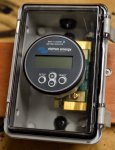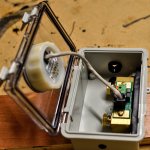So I know I'm jumping ahead but I am trying to think about options for charging while driving. The solar panels in the bed of the truck did not work well and you guys pointed out some good reasons why.
I guess I have 2 options?
1) Maintain battery voltage (no charge) using the 7 pin - maintaining the battery may not be a bad deal especially since my drives from home are 7+ hours sometimes on a Friday...any gotchas with this setup?
2) DC to DC charger
The new Orion-Tr Smart DC-DC charger is designed for use in dual battery systems in vehicles or boats, where the (smart) alternator and the start battery are used to charge the service battery. The model range is suitable for 12V or 24V systems, and both lead acid and lithium batteries. Why do...

www.victronenergy.com
In the above link there is a diagram, what are the little attachments on the positive side of the battery connections? My trailer battery is at the back of my rig...about as far from the alternator as I can get....is DC-DC charging practical in my situation without upgrading the alternator? I think the distance would be something like 25' of wire if not more depending on how I run it. IF practical, should the charge controller go in the galley near the battery or somewhere in the truck near the alternator? This is all future planning, I don't really want to do the DC-DC system since it's more $$ more complication and more opportunity for something to go wrong (complexity).











